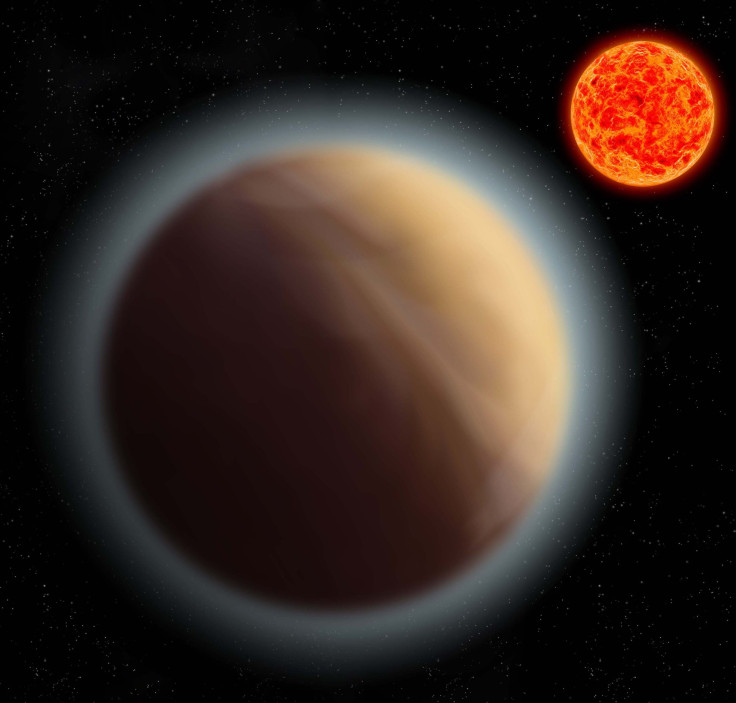GJ 1132b: In A First, Astronomers Detect Atmosphere Around Nearby Low Mass 'Super-Earth'

About 39 light-years from Earth, in the direction of the Vela constellation, lies a red dwarf star named GJ 1132. Around this star orbits an unassuming planet, roughly 1.4 times the size of our planet, called GJ 1132b.
This “super-Earth” has now become the most Earth-like planet around which an atmosphere has been detected. While the planet itself is unlikely to harbor life as we know (what with the surface temperature being a toasty 700 degrees Fahrenheit), the observations — made using a European Southern Observatory telescope in Chile — mark a crucial milestone in scientists’ efforts to analyze the atmosphere of smaller, lower-mass planets.
Read: Want To Make A Planet More Livable? Add Some Volcanoes
“While this is not the detection of life on another planet, it's an important step in the right direction: the detection of an atmosphere around the super-Earth GJ 1132b marks the first time that an atmosphere has been detected around an Earth-like planet other than Earth itself,” John Southworth from Keele University who led the team that made the observations, said in a statement.
GJ 1132b is a transiting planet, and when seen from Earth, it passes directly in front of its star every 1.6 days, blocking some of the star’s light. Observations made during these events revealed that the planet’s atmosphere is opaque when viewed in certain infrared wavelengths — making the planet appear larger than it actually is — but transparent at all the others.
According to the researchers, these observations can be explained if the atmosphere is rich in water and methane.
Water has been previously detected in the atmospheres of a class of large and massive exoplanets called “hot Jupiters” — although the quantity has been less than what was expected.
If water is indeed present in GJ 1132b’s atmosphere, it could be an indication that the planet is a “water world” (à la Miller’s Planet in Christopher Nolan’s “Interstellar”), with an atmosphere that’s a mixture of steam and methane.
“The presence of the atmosphere is a reason for cautious optimism. M dwarfs are the most common types of star, and show high levels of activity; for some set-ups, this activity (in the shape of flares and particle streams) can be expected to blow away nearby planets’ atmospheres,” the Max Planck Institute for Astronomy, whose researchers were part of the team that made the observations, said in the statement. “GJ 1132b provides a hopeful counterexample of an atmosphere that has endured for billion of years (that is, long enough for us to detect it). Given the great number of M dwarf stars, such atmospheres could mean that the preconditions for life are quite common in the universe.”
It’s too soon to pop the champagne, though. Several recent studies and simulations have shown just how notoriously fickle red dwarfs — the most common and longest-lived stars in the universe — are. Scientists believe that when these stars are young, they emit strong flares and ultraviolet radiation that can make planets in orbit uninhabitable — unless they are shielded by extremely strong magnetic fields.
© Copyright IBTimes 2025. All rights reserved.






















